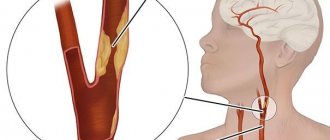Probably the biggest intrigue in the life of every pregnant woman has been and will be the desire to find out at all costs who lives under her heart - a girl or a boy. In addition, this question is also of a purely practical nature, because the expectant mother cannot wait to buy a dowry, and whether it will be “blue” or “pink” depends on the gender of the child.
The gender of an unborn baby is no longer a secret: at 17–20 weeks of your “interesting” situation, an ultrasound specialist will easily answer the question that concerns you. This procedure does not pose the slightest danger to the health of the fetus and allows you to closely monitor the growth characteristics of the baby at certain stages of its development. During 9 months of pregnancy, several routine ultrasound procedures are performed:
- from 10 to 13 weeks - transvaginal examination;
- from 20 to 22 weeks - transabdominal;
- from 32 to 34 weeks - the last.
However, even in this event, “punctures” occur when a secretive or shy person turns his back to the monitor. Let's remember alternative ways to determine the sex of a baby.
When the fetus's heart begins to beat
For the full development of the fetus, an autonomous circulatory system is necessary. Therefore, the cardiovascular system is one of the first to be laid down and formed. And at the very first ultrasound when confirming pregnancy, you can already hear the first beats of your baby’s heart. This will happen on the 22nd day. And in just 5 weeks the formation of the most important system of the body will be completed.
In the first trimester, the frequency of strokes can only be calculated using ultrasound, in the second - EchoCG, in the third - auscultation, and starting from the 32nd week, CTG is done. During each period of pregnancy, heart rate norms are different.
Ultrasound
The most common diagnostic method, with the help of which a lot of useful information about fetal development is learned. Ultrasound is performed several times during pregnancy. At about twenty weeks, it is already possible to clearly determine the sex of the child. However, due to the position of the fetus, sometimes it is not immediately possible to see the genitals.
I usually suggest that parents wait a little, since there is a chance that the child will turn around and the long-awaited answer can be obtained at a repeat ultrasound. Ultrasound machines are constantly being improved, new techniques are emerging, and therefore the quality of diagnosis is also improving.
How the heart develops
The rudiment of the organ is formed in the 4th week, and by the 5th week pulsating contractions first appear and autonomous blood circulation appears. While the blood circulates in one stream, representing one tube, in the bend of which there is a small motor - the fetal heart. By the ninth week of pregnancy, the small heart becomes four-chambered. It differs from the organ of an adult, but is still fully formed. These weeks are the most important stage when any disruptions in the formation of an organ lead to congenital defects.
Listening Methods
Listen to the rhythm using the following instruments:
- In the early stages, from the fourth to the twentieth week, ultrasound.
- Starting from the twentieth week, the rhythm frequency is listened to with a phonendoscope.
- After the twentieth week, the beating is clearly audible in a special tube.
- At the last stage of pregnancy, Echo is used.
- During childbirth, a cardiotocograph is used for listening.
A cardiotocograph is a special belt equipped with sensors. The belt is attached to the belly of the laboring woman, sensors show the frequency of uterine contractions, oxygen saturation level, and heart rate.
How to listen to the fetal heart
You can hear the baby’s heartbeat on your own or during a visit to the gynecologist. You can do this at home no earlier than the 2nd trimester, with a doctor - earlier. An experienced gynecologist will use the device to help you find out the sex of the baby by heartbeat. Let's consider both approaches.
Home listening methods
- Stethoscope. It can be used at 18 - 20 weeks, when the heart works quite strongly and clearly. Place the device on your stomach and listen. If you don't hear any knocking sounds, don't worry - move the stethoscope over your stomach. You can buy the device at a medical equipment store or pharmacy.
- Heart monitor. If you are worried about your child's development, purchase this device. It is relatively cheap, but will save you from unnecessary worries between consultations with a gynecologist. At any moment you can listen to the baby's heartbeat and calm down. But it is advisable to buy it only from the fifth month of pregnancy - before that, a portable cardiac monitor for home use simply will not hear heart rhythms.
- Mobile app. This method is suitable for later dates. Various applications have been developed: some are paid and some are freely available. Some even allow you to record the sound of your heart beating so you can play it back for family or friends. To listen to your heart rhythm, you just need to place the smartphone microphone on your stomach.
When choosing devices for home use, ask your doctor which model he or she recommends. The result of “listening” depends on the quality of the device, so choose devices from trusted manufacturers.
Medical methods for measuring heart rate
- Fetal Doppler. This method is used at the 12th week of pregnancy, although it can also be heard at the 9th - 10th week. Using sound waves, the device amplifies the sounds of your heartbeat. The procedure is simple: a woman lies down on a couch, the doctor runs a sensor over her stomach, and the beating of a nascent heart can be heard in the office.
- Ultrasound. Ultrasound is performed at the very beginning of pregnancy. Already at the 8th week, during the examination, you can hear how the baby’s heart works. Please note that the study is prescribed so early if there are risks or it is necessary to exclude an ectopic pregnancy.
- Stethoscope and fetoscope. These devices are not as powerful as ultrasound or Doppler. Therefore, they are used from the second trimester. Tones are assessed - clear or dull. In the first case, everything is fine with the fetus, in the second, developmental delay or hypoxia is possible.
- CTG. Cardiotocography is used to listen to the heart from the 30th week.
Modern medicine has reliable methods for assessing a baby’s heart rate and timely detecting developmental problems.
When and how can you hear your heartbeat?
Surprisingly, the heart of a future person begins to live 20 days after conception. According to experts, it decreases for the first time on the 14th day. True, it will be possible to qualitatively listen to the heartbeat only by the 7th week of pregnancy.
The fetal heartbeat is studied using a phonendoscope or tube. At first, the baby’s heart rhythm adapts to the work of the expectant mother’s heart; later, the organ speeds up significantly and gives doctors many signals.
The work of the heart muscle provides information about the health and condition of the baby, so modern gynecologists always listen to the fetal heartbeat at every appointment. Failures or weakening of shocks are a reason for an unscheduled ultrasound. And their absence is an indication for examination for a frozen pregnancy.
To determine the sex of a child, this method was used only before the invention of ultrasound machines. Experienced obstetricians and gynecologists still have this knowledge, but of course, they are not guided by such results, but only take them into account. The main method for determining sex is fetal ultrasound.
Is it possible to determine the sex of a child by heartbeat?
It is impossible to give a definite answer to this question. Some obstetricians deny the reliability of the method, others use it in practice.
Previously, when there were no ultrasound and other hardware research methods, obstetricians determined the sex of the unborn child by heartbeat. And this method was considered reliable. And now you can find doctors who accurately determine gender using this method.
Of course, hardware methods are more reliable. Therefore, the reliability of the method of determining sex by heart rate can be estimated at 50%.
Gender of the child: general description of formation
At the moment of fertilization of the egg, only one sperm penetrates into its cavity.
It can carry sex gametes with an X or Y chromosome. Accordingly, the gender of the future baby is determined already at this moment. During this period, the embryo has not yet fully formed, and you will not be able to determine its gender. At approximately 8 weeks of pregnancy, reproductive organs begin to form. Girls and boys look the same at this moment. However, in the future there will be a major transformation and completely distinct genitals will appear.
How to find out a child's heartbeat from a gynecologist
The doctor uses a stethoscope device. It allows you to listen to the first heartbeats at 18 - 20 weeks of pregnancy. A stethoscope is placed on a woman's stomach.
The work of the heart is heard as double beats. The obstetrician evaluates it according to the following characteristics:
- beats per minute;
- key;
- rhythm;
- point of best audibility.
Based on these characteristics, the doctor first of all evaluates the condition and development of the organ. But he can also guess the sex of the unborn child, since the heart of children of different sexes works differently.
Gender of the child: general description of formation
The first method is based on the fact that when listening to the heartbeat of an unborn child, one should start from the fact that the heart rate of girls is much more intense and faster than that of boys. At the same time, the heartbeat of girls is no more than 150 beats per minute, and the heart of boys beats at a speed of about 120 beats per minute.
The second way to determine the sex of a child by heartbeat is not by counting the number of beats, but by listening to the very heart rhythm of the unborn baby. Traditional healers and midwives claim that boys' hearts beat rhythmically, measuredly: knock...knock...knock... But girls' heart rhythms are more chaotic and do not coincide with their mother's: knock-knock-knock.
The third way to determine the sex of a child by heartbeat is based on the location of the baby’s heart, or rather, the fetus itself. If you believe this theory, boys and girls live in the belly of the expectant mother, being in different positions. Thus, if the heart rhythm is heard on the left side, then this indicates that a boy is developing inside. If the heart is heard on the right side, then most likely you will have a daughter.
In search of ways to determine the gender of their unborn baby, women ask doctors the question: is it possible to find out the gender of the child by the heartbeat? Doctors do not confirm the reliability of this method, explaining this fact by the fact that it has no physiological basis. The body of male and female babies develops almost identically, so it is impossible to assert the possibility of establishing gender only by the activity of the fetal cardiac system. However, women themselves often use this technique as an alternative to ultrasound.
According to the observation of pregnant women themselves, the sex of the child can be determined by the heartbeat. A girl's and a boy's heart beats differently. In one minute, in a female fetus it makes more than 140 beats. In a male fetus, the number of heartbeats does not exceed this indicator and ranges from 120–130 beats per minute. In this case, it is worth taking into account the gestational age at which the calculation is carried out.
Determining the sex of a child by heartbeat is carried out by counting the number of contractions in 1 minute. To do this, you need to place the phonendoscope on the surface of the abdomen, note the time and start counting. It should be borne in mind that the procedure should be carried out in complete rest and in a horizontal position of the mother. Experiences, worries, and previous physical activity can distort the results obtained.
Determining the sex of a child based on the fetal heartbeat is a complex procedure. It is difficult to listen to tones, so results not obtained in this way are not objective. In most cases, a pregnant woman pays attention to the specified data in the conclusion of an ultrasound and CTG. The latter technique is used to assess fetal cardiac activity as an additional study.
Doctors are able to find out the gender of the fetus as early as 12 weeks of pregnancy. In this case, ultrasound is used, with the help of which it is possible to visualize the genital tubercle of the fetus. However, often assumptions made at this time regarding the sex of the unborn baby are erroneous due to the great similarity of the external genitalia of girls and boys.
It is more difficult to determine the sex of a baby based on its heartbeat at 12 weeks. By this time, the fetal heart is already formed and functioning, but its work has not yet been properly established. Rhythm and heart rate can change and are influenced by:
- processes of intrauterine development;
- maternal nervous system;
- Features of a pregnant woman's daily routine.
It is impossible to accurately determine the sex of a child by heart rate. However, many pregnant women are able to make correct predictions in this regard using heart rate values. It is generally accepted that the heart of a future girl contracts more often. According to observations of women who have already become mothers, it makes at least 140 beats in one minute. To obtain a reliable result, it is necessary to carry out several calculations over a short period of time and calculate the average value.
Before determining the sex of the child by the heartbeat, a woman must know some physiognomic features. The heart of an unborn male baby beats less often, so if a pregnant woman has no more than 140 beats in 1 minute, you should expect a boy. At the same time, pregnant women claim that this method truly predicts the sex of the fetus only up to the 20th week of pregnancy - at a later stage the number of erroneous calculations increases. In addition, by this time, the pregnant woman already knows with a high degree of probability who will be born, based on the results of the ultrasound.
Women who determine the sex of the child by the heartbeat should also pay attention to the rhythm of contractions of the heart muscle. It is generally accepted that the baby’s heart beats somewhat chaotically and the rhythm is inconsistent. The timing of contraction and relaxation may vary. Heart sounds are not so loud, so listening to them often becomes problematic.
Having learned how to determine the sex of the unborn child by the heartbeat, it is necessary to take into account other signs. To correctly determine who will be born - a boy or a girl - based on the heartbeat, you need to determine the location of the fetal heart, or more precisely, its body. According to the existing theory of experienced mothers who have given birth to two children, boys and girls are located differently in the mother's womb.
Not so long ago, the mystery of the sex of the unborn child remained a mystery until the moment of its birth. Our grandmothers used folk methods in solving this issue, from studying the shape of a pregnant woman’s belly to analyzing her taste preferences. Japanese and Chinese conception tables and signs relating to the appearance and behavior of a pregnant woman were used.
But already in those days, gynecologists preferred to trust the laws of anatomy, and knew how to determine the sex of a baby by its heartbeat. This technique is still used today, although it has been established that its reliability does not exceed 70%. Is this not enough? Any other folk methods of determining sex give a probability of 50%, i.e. absolutely useless - guessed right - wrong.
According to the theory, there is a close connection between the work of the heart and gender. There are significant differences in the heartbeat of boys and girls. The main ones:
- Beat frequency. The heart rate of girls is higher than that of boys - 140 beats versus 120. It is believed that this information is reliable only until the 20th week of pregnancy, although there is an opinion that the period does not matter.
- Heart rhythms. Male power manifests itself already in the womb. A boy's heart is more powerful, so its contractions are more rhythmic and loud. The girls' heartbeat is somewhat chaotic; doctors compare it to alarming music. It is also quieter than boys. However, determining the sound level is quite difficult.
- Sound location. A number of experts believe that girls and boys occupy different positions in the womb. A boy's heart can be listened to on the left, and a girl's heart on the right. The reliability of this method is questionable, because at the beginning of the term the baby has enough space in the uterus and can actively move, unlike later stages, where the fetus is limited in maneuvers.
There is an opinion that the mother’s heart beats simultaneously with the rhythm of her son’s heart and resonates with the girl’s heartbeat.
Modern medicine can determine the gender of the unborn child during a routine ultrasound during the 17-20th week of pregnancy - ultrasound of the second trimester.
This study is absolutely safe for the baby, but it is worth noting that its main goal is not to determine the gender of the fetus, but to monitor development and track changes in condition. In most cases, the gynecologist sees who will be born - a girl or a boy, but even the latest equipment can malfunction - at the right moment the baby may not be in the mood and turn his butt to the doctor and parents. In this case, if you really want to clarify the issue, the examination can be repeated in a couple of weeks.
We invite all pregnant women to screening ultrasounds of all trimesters at the Diana Clinic in St. Petersburg. Here you can also undergo other specific examinations during pregnancy, for example, ultrasound of the symphysis, Doppler ultrasound, fetometry, 4D ultrasound, take tests, treat infections, etc. The examination is carried out using a new expert apparatus. The cost of an ultrasound depends on the stage of pregnancy, starting from 1300 rubles.
There are several options for both the method itself and its interpretation. First of all, this is the number of beats per minute. Everything here is so confusing that it is simply impossible to figure it out. The method is not official and is not described in medical books, but despite this, it is used by many obstetricians. Surely your friends told you that their midwife accurately “calculated” the unborn child. Or exactly the opposite, which also happens. But how?
Some claim that boys’ hearts beat faster, while others, on the contrary, claim that this is typical for girls. A variety of numbers are mentioned: above 150 - girls, within 120 - boys, 160 and more - boys, below 140 - girls, and so on...
In some versions, it is specified that the test is valid only for up to 20 weeks or throughout the entire pregnancy. In general, complete confusion!
Another version regarding the differences in the heartbeat of children of different sexes is an unequal rhythm. They say that boys’ hearts beat more rhythmically, measuredly: knock... knock... knock... And girls have a different “melody” - excited and chaotic: knock-knock-knock... Although there is also information that boys’ hearts simply beat faster and louder. And one more thing: the rhythm of the boy’s heartbeat coincides with the mother’s, but the girl’s is different.
How to determine the sex of a child by heartbeat
Obstetricians who practice this method of determining gender use several methods.
By beat frequency
It is generally accepted that a female fetus's heart beats faster than a male fetus's. If the heart beats up to 140 times, there is a high probability of having a son, and more often a daughter. This method is used during pregnancy until the end of the second half.
By rhythm
Boys are in the lead on this basis - their heart beats more clearly and rhythmically. Moreover, it works in unison with the mother’s pulse. But in girls, the heart does not work so orderly: it can slow down, speed up, and does not work so clearly.
By sounds
The sound of the heart depends on the position of the baby. If the sound is better heard on the left, expect a son, and if on the right, wait for a daughter.
By tone
Babies have muted tones, boys have clear tones. Only obstetricians with extensive experience can determine the sex of a child by the heartbeat - namely, the tone - with great reliability.
Try the technique yourself
The best way out is to wait until the time when it will be possible to find out the baby’s gender not by the heartbeat at 15 weeks, but by ultrasound.
But if you can’t wait, you can check for yourself how to determine the gender of a child by heart rate. To do this, return to the table of heart rates by week. Of course, this method cannot be taken seriously, but you can try it as additional entertainment during pregnancy. In the end, you will not lose anything if the ultrasound coincides with your predictions or, on the contrary, shows a different result.
So, the table gives us two heart rate values for each week - the minimum permissible and the maximum permissible. Proponents of the method are sure that girls’ hearts beat faster (oh, how they can’t wait to be born into the world!).
Let's determine which values in our table “can” be considered girlish and which are boyish. To do this you will have to remember arithmetic.
- When calculating how to find out the sex of a child by the fetal heartbeat at 12 weeks, find in the table the heart rate values for the 12th week: 150-174 beats/minute.
- Now count the difference between the larger and smaller values - 24 beats per minute.
- Divide the difference in half and you get 12.
- Now add 12 to the minimum heart rate: 150+12=162 beats.
This is how you can listen to the fetal heartbeat.
Well, we have found the maximum pulse value that is typical for future men at the 12th week - no more than 162 beats. All heart rate readings above this value will mean that there is a future lady living in your womb (remember, this technique has not been scientifically proven).
Make exactly the same calculations for each subsequent period. Let's look at it for another week for clarity.
- To calculate how to determine whether the unborn child is a boy or a girl based on the heartbeat at 13 weeks, find the heart rate norm for the 13th week in the table, it will be 147-171 beats.
- Subtract from 171 (the larger value of the norm) 147 (the smaller value), you get 24 again.
- Divide 24 in half = 12, and add this number to the minimum normal value: 147+12=159.
In this case, it turns out that if the fetal heart rate is above 159 beats per minute, then you will have a girl, and if it is less than 159 beats, then you will have a boy.
Congratulations, now you know exactly how to determine the gender of a child from the fetal heartbeat using a method of unknown origin.
Surprisingly, despite the variety of medical articles on the topic of sex determination, which give a qualified answer about the baby’s gender, many parents still look for roundabout ways and stun doctors with questions.
The most popular of them:
- how to find out the baby's gender by heartbeat at 13 weeks (the sooner the better!);
- how to determine the gender of a child by heartbeat at 20 weeks (for some reason this period is considered the most suitable for calculating gender by heartbeat).
There are also young parents who try to calculate the gender of the child by updating the blood of the parents. For a doctor, this is a slightly strange formulation, but just look and read the so-called “mother’s forums” to see how popular the question is, how to calculate the gender of a child by updating the parents’ blood.
But you and I know that it is possible to reliably determine the gender of a fetus only in a doctor’s office - or by finally giving birth to a long-awaited baby. You won’t get rid of your baby if its gender doesn’t suit you, will you?
How to calculate the gender of a child based on ovulation and can this method of planning be trusted? Determining sex using the Japanese pregnancy table and Vanga's table.
Heart rate norms by week
Various factors influence the functioning of the heart - the phase of fetal activity and the duration of pregnancy, for example. Using the heart rate, the gynecologist evaluates the development of the organ and the overall health of the fetus.
Here are the fetal heart rate norms by week of pregnancy:
- from the 4th to the 6th week - from 80 to 85 beats per minute;
- in the 6th week - from 100 to 135;
- in the 7th week - from 115 to 130;
- in the 8th week - up to 170;
- from 9th to 10th - from 170 to 190;
- from the 11th to the birth - an average of 150 beats with a possible slight fluctuation in one direction or another (from 140 to 160 beats is the norm).
From the 2nd trimester, the pulse stabilizes and ranges from 140 to 160 beats. Any deviations from this indicator indicate a problem: if the pulse is rapid, the fetus experiences oxygen starvation, and if it is slow, it suffers from hypoxia.
In this case, the gynecologist refers the patient for additional examinations and, if necessary, corrects the condition.
When does the heartbeat start
Monitoring the parameters of the small heart is included in the protocol instructions for “pregnancy management.” Its main task is not to determine gender by heartbeat, but to timely identify developmental problems. Particular attention is given to women with cardiovascular and/or other diseases that may affect the course of pregnancy and the health of the child after birth.
The photo shows a human embryo at 3 weeks of development.
The human heart begins its continuous work from the 22nd day after conception. At this moment, the heart is still single-chamber, and the myocardium contracts in time with the mother’s heartbeat.
Normally, this figure is 80-86 beats/min. Over the next 3 weeks, the fetal heart rate will become different from the maternal one, increasing by an average of 3 beats per day. By day 40, when the fetal heartbeat can be determined using ultrasound, it will reach 104-127 beats/min.
For your information. Even if approximately, it is not possible to find out the gender of the unborn child by analyzing the number of myocardial contractions per minute in the earliest stages of development, namely up to 6-7 weeks of intrauterine development.
Reliability of the measurement method
The method is time-tested. But still, some gynecologists criticize the tactic of determining the sex of a child by heartbeat. From the point of view of modern obstetrics and gynecology, the functioning of the cardiovascular system depends on many factors. And they affect the reliability of the results. These are the factors:
- Term. In different trimesters, the heart works with different frequencies, rhythms and tonality. This is due to the formation of the autonomic nervous system. For example, after conception and until the 2nd trimester, the heart beats evenly and rhythmically, regardless of gender. Then the heart rate changes: in boys it increases to 150, in girls up to 140 beats;
- Activity phase. If the baby is awake, the heart works faster, if he sleeps, it is calmer and slower;
- Mom's condition. If a woman is worried or under stress, the baby’s heart can work faster, and vice versa. The woman’s physical condition and her posture while listening to the fetal heart rate are affected.
The frequency and rhythm of heart contractions are influenced by the location of the fetus, the peculiarities of the development of the cardiovascular system, and the tone of the uterus. Many modern gynecologists believe that it is impossible to take into account all these factors when determining the sex of a child by heartbeat.
The method of determining the sex of a child by heartbeat is also criticized by parents for whom it did not work.
Heartbeat without deviations from normal
- From the sixth to the eighth weeks, a heart rate of 110 to 130 beats per minute is considered normal.
- Starting from the ninth, the fetal heartbeat increases to 190 beats.
- From the thirteenth week of development, the rhythm of contractions of the heart of the unborn child gradually decreases to 150 beats and beats at this rhythm until the birth process begins.
An abnormal heartbeat indicates oxygen deficiency, congenital anomalies, or a disease in the pregnant woman.
By listening to the heart of the unborn child, the obstetrician can recognize dull tones, which indicates the following problems:
- incorrect position of the placenta;
- polyhydramnios;
- anemia;
- obesity in a pregnant woman.
The absence of a heartbeat indicates the death of the baby, which requires artificial termination of pregnancy.
Who will be born: modern ways to find out
There are 2 reliable ways to find out who will be born in a family.
The first is ultrasound. Already at the second screening, that is, from the 12th week, you can get an answer. But errors are also possible - the method guarantees the correct result in 97% of cases.
The second method is amniocentesis. This invasive technique is carried out according to strict indications and not to find out who will be born to a couple, but to diagnose certain diseases in the baby. And sex determination is only an additional option of amniocentesis. But this is currently the only method that gives a 100% correct result.











